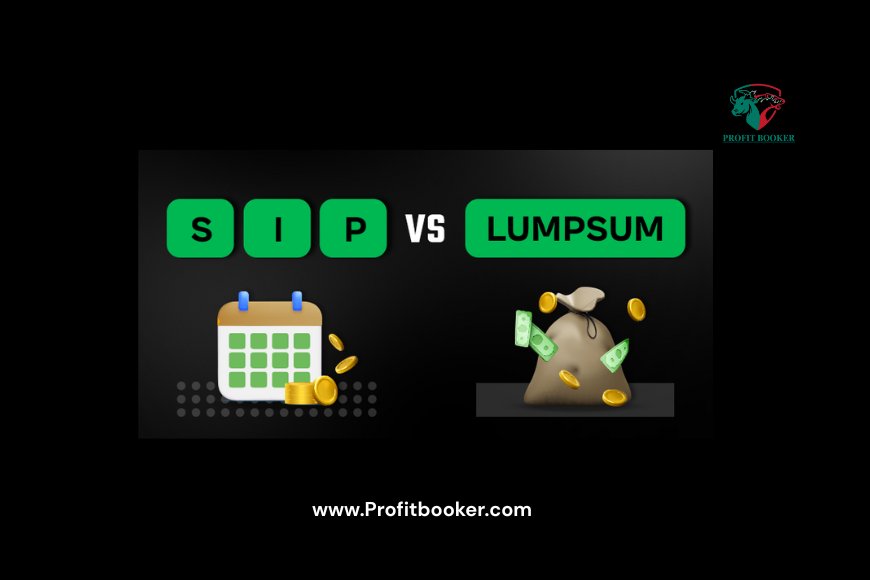SIP vs. Lump Sum: Which Investment Strategy Works Best in 2025?
SIP and Lump Sum are two popular ways to invest in mutual funds. In 2025, market volatility, interest rates, and long-term goals matter more than ever. This blog compares both strategies to help investors choose wisely.

Introduction
When it comes to investing in mutual funds, one of the most common questions investors face is:
Should I invest through SIP (Systematic Investment Plan) or Lump Sum?
Both strategies have their advantages, but the choice depends on your financial goals, risk appetite, and market conditions in 2025. With global uncertainties, inflation concerns, and rising opportunities in India’s stock market, picking the right approach is more important than ever.
In this blog, we’ll break down SIP vs. Lump Sum in 2025, explore their pros and cons, and help you decide which works best for you.
What is SIP?
SIP (Systematic Investment Plan) allows you to invest a fixed amount of money in mutual funds at regular intervals (monthly, quarterly, etc.).
-
Works like EMI but for investment.
-
Helps you build wealth gradually.
-
Makes use of Rupee Cost Averaging (buying more units when the market is low, fewer when it’s high).
Example: If you invest ₹5,000 per month in a mutual fund for 10 years, your small contributions add up to a significant corpus with the power of compounding.
What is Lump Sum Investment?
Lump Sum means investing a large amount of money at once in a mutual fund or stock market.
-
Works well if you have extra savings or a big bonus.
-
Potentially higher returns if invested during market lows.
-
Requires careful timing and market understanding.
Example: Investing ₹5,00,000 at once in 2025 in an equity mutual fund can give you faster wealth growth—but also comes with higher short-term risk.
SIP vs. Lump Sum: Key Differences
| Factor | SIP (Systematic Investment Plan) | Lump Sum Investment |
|---|---|---|
| Investment Style | Small, regular payments | One-time, large investment |
| Best For | Salaried individuals, beginners | Investors with surplus funds |
| Risk | Lower (averages out volatility) | Higher (timing risk) |
| Market Timing | Not required | Crucial |
| Discipline | Encourages habit of saving | Requires self-discipline |
| Returns | Stable in long term | High if invested during lows |
SIP in 2025: Why It Works Best for Most Investors
In 2025, global markets are uncertain due to inflation, oil price fluctuations, and geopolitical tensions. For Indian investors, SIPs are proving more reliable because:
-
Market Volatility → SIP smoothens the risk through rupee cost averaging.
-
Growing Indian Economy → India’s GDP growth, IT, pharma, and green energy sectors boost long-term returns.
-
Ease for Salaried People → Even with ₹500–₹1,000 monthly, you can start investing.
-
Compounding Power → The earlier you start, the bigger your wealth grows.
Example: A ₹10,000 SIP in a fund giving 12% annual returns can grow to ~₹2.3 crore in 25 years.
Lump Sum in 2025: When It Works Better
Lump sum is best if:
-
You received a bonus, inheritance, or business profit.
-
You are confident about market conditions (like investing after a big market correction).
-
You have long-term goals (10+ years).
Example: If Sensex dips by 10–15% in 2025, investing ₹10 lakhs lump sum could give very high returns when the market recovers.
Which is Better in 2025?
-
Choose SIP if:
-
You are a beginner.
-
You want to invest regularly from salary.
-
You want disciplined wealth creation.
-
-
Choose Lump Sum if:
-
You have a big idle amount.
-
You can handle higher short-term risk.
-
You invest during market dips.
-
For most investors in 2025, a combination of both works best:
-
Put surplus money in lump sum during market corrections.
-
Continue SIPs for long-term wealth building.
Expert Tip: Hybrid Strategy in 2025
Many financial advisors suggest a hybrid approach:
-
Invest 60–70% via SIPs (for steady growth).
-
Keep 30–40% for lump sum opportunities (market dips, new fund launches).
This balances risk and reward.
Real-Life Example:
-
Investor A (SIP): Invested ₹10,000 monthly for 5 years → ~₹8 lakh corpus.
-
Investor B (Lump Sum): Invested ₹6 lakh at once during 2020 market dip → grew to ~₹11 lakh by 2025.
Lesson: Both work, but timing + consistency = best results.
Conclusion
In 2025, SIP is safer and better for most retail investors, as it spreads risk and builds wealth steadily. However, lump sum works great if markets dip and you have spare cash.
The smartest choice?
Combine both: Regular SIP + Strategic Lump Sum = Maximum wealth creation.




